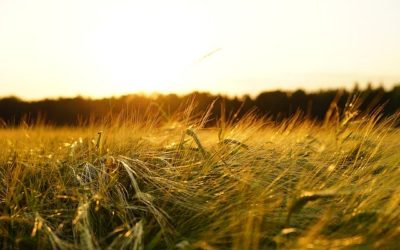This spring, if you are a farmer who asks for a Thousand Kernel Weight (TKW) test on cleaned samples of each of your seed lots, you already understand why this information matters. TKW is the weight, in grams, of 1,000 seeds from a random sample. It’s highly useful for calculating the optimal seeding rate for a given crop type or variety, and it can also be used to calibrate a seed drill as well as estimate yields.
As stated in an Alberta Agriculture and Forestry (AAF) guide called Using 1,000 Kernel Weight for Calculating Seeding Rates and Harvest Losses, TKW and seed size are attributes that, beyond varying among crops and between varieties, can vary from year to year or from field to field. The guide notes in addition to using TKW for seeding rate, calibration of the seed drill and performing yield estimates, it can also be used to estimate shattering and combine losses.
“Farmers are understanding that germination and disease tests matter, but seed size also matters,” explains Sarah Foster, president and senior seed analyst at 20/20 Seed Labs in Nisku, Alta. “If you don’t know your TKW, you will overplant, causing competition for nutrients and moisture. That will also increase your costs unnecessarily as the cost of seed, fuel and other farm input costs continue to increase.”
Planting too little seed is also a possibility, says Foster, if you don’t have TKW. An inadequate stand in pulses means the weed population can get an easier foothold. In cereals, she adds, this can result in tillering, which is good for yield but also can cause variability in maturity.
Foster believes that TKW, combined with the germination or vigour seed test result, should be considered the true standard by which seed quality should be measured (replacing use of just the germination/vigour test). The standard germination test, she adds, has long been used as the benchmark in assessing the planting potential of a crop, but TKW is the most practical tool in calculating optimal seeding rate.
In order to calculate the optimal seeding rate, producers will need the TKW and germination percentage test results for the seed lot, as well as the desired plant population (DPP). They’ll also need to calculate an estimate of seedling survival rate, expressed in decimal form. For example, 90 per cent is expressed as 0.90. In cereals, the seedling survival rate is 80 to 95 per cent (0.80 to 0.95) if growing conditions are good at planting, but lower if conditions are poor.
Canola mortality often ranges from 30 to 60 per cent (survival rate of 0.40 to 0.70). In its guide, AAF advises that “since mortality depends on the combination of conditions and practices of individual farms, producers should keep records of emergence (and thus mortality) on their fields.” These sentiments are echoed in the Canola Council of Canada seeding rate guidelines (see link below). If a producer has a TKW of six grams and uses a seeding rate of 1,800 grams (4 pounds) per acre (60 seeds/m2or about 6 seeds/ft2) and has 0.50 seed survival, the crop has only 30 plants/m2 or 3/ft2.
“This does not leave much margin for competition with weeds or plant death [due to disease, frost, insects or other factors] before yield potential starts to drop,” states the seeding rate guidelines. “Therefore, considering seed size, seedling survival rates and target plant populations when setting seeding rates can minimize risk and save money.”
Looking Forward
Foster is pleased that TKW tests, which have been available for many years, are now being used much more by growers. The cost is quite low — getting a TKW done at her firm, for example, is about $18 (based on counting three one-thousand seed samples and calculating the average weight).
She reports a new development in the industry for the use of TKW by seed firms is to provide seeding rate on the label of bags of seed here in Canada and beyond, with seed now being sold as an acre package. This means seed companies are now basing how many seeds are in the bag on the unit count or TKW. “They sell the exact amount of bags the grower needs to seed his or her known acreage,” she says.
Where on the Web
A free app forcalculating seeding rate for many different crops using TKW is available at
https://apps.apple.com/us/app/id1257514147
The Alberta Agriculture and Forestry guide, Using 1,000 Kernel Weight for Calculating Seeding Rates and Harvest Lossesis available at
https://www1.agric.gov.ab.ca/$department/deptdocs.nsf/all/agdex81/$file/100_22-1.pdf.
The Canola Council of Canada seeding rate guidelines are available at
https://www.canolacouncil.org/canola-encyclopedia/plant-establishment/seeding-rate/.
How to calculate hemp seeding rates using TKW is available at





